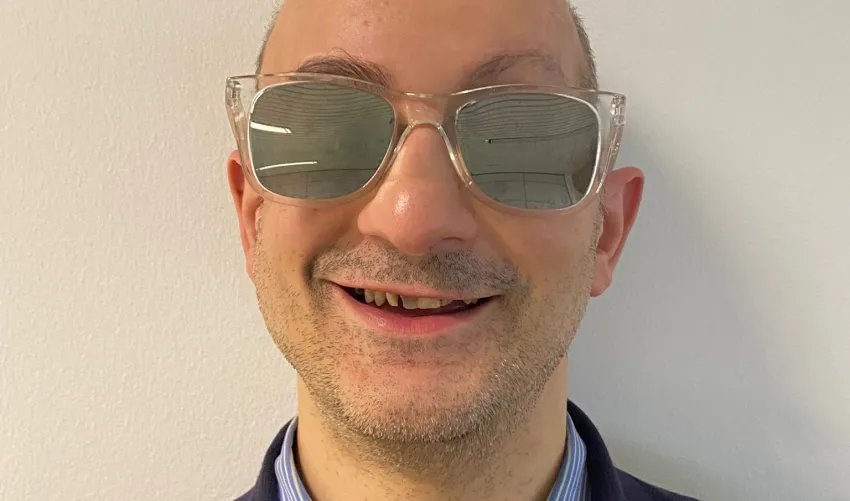
Emanuele Parise, Working to Guide the Visually Impaired on Campus
For 23 years he lent his voice to the Bocconi University switchboard, accepting and sorting probably hundreds of thousands of calls. But since about a year ago his activity has focused, as a member of the University's Inclusion Service, on supporting the development of all those systems that can make the University as a whole more accessible and easier to use. The work of Emanuele Parise, fully blind and now 43, today revolves around the theme of all-around accessibility: "It is a matter of developing the theme, breaking down all its aspects, starting from physical accessibility to arrive at digital accessibility, that is, the ease of use of the sites and documents produced by the University."
Among the different projects that Emanuele is following is that of the installation of radio beacons for the visually impaired and the creation of a tactile floor path: "We have installed 40 radio beacons around the campus", says Emanuele. "These are talking devices positioned outside buildings and scattered on connecting paths that 'guide' blind and visually impaired people , but also those with spatial orientation problems." To catch the signal, which sends pulses and voice, "you need a special white cane". A stick capable of acting as a receiver – Bocconi has purchased 3 at the moment – different from the standard sticks supplied to the blind and visually impaired.
As an alternative to the stick, however, it is possible to use in its place a pocket-sized device, called minipocket, which is useful both for the visually impaired and, again, for those with difficulty in orientation (Bocconi has equipped itself with 7 devices). "The beacon project is called Leti Smart and its peculiarity is that in Milan we are the first to have adopted them." The project will then evolve with the implementation of a tactile path based on special flooring and pavement on campus, with the aim of promoting maximum mobility and personal autonomy.
On the front of digital accessibility, "which is in fact a world unto itself", explains Emanuele, "the fundamental question lies in the knowledge and implementation of systems that can facilitate screen reading. " Here it is important to distinguish between visually impaired and completely blind people like me. There are four different systems of screen readers, and each one behaves differently." The crucial issue, what makes a digital document really accessible, however, is more cultural, to ensure that all users at the University internalize the needs related to accessibility. In short, they make inclusion a daily practice."
"With digital documents, it is a matter of adapting one's content creation system bearing in mind that digital readers read the contents of a page by individual columns, that it is better to produce documents with images that always allow for inserting a description," continues Emanuele. But, above all, it is also important to work on training, "teaching about which software may be most suitable for accessibility and explaining how to organize a document or a web page. Those who work next to me often don't realize it until I explain it to them."
Working on inclusion and accessibility, therefore, means working first of all on a change in culture and mentality: "Otherwise, it is only a matter of transitory adjustments", concludes Emanuele Parise. " Today, in our society, even if the issue of disability is slowly being considered, after a while it tends to be forgotten if the processes are not changed."